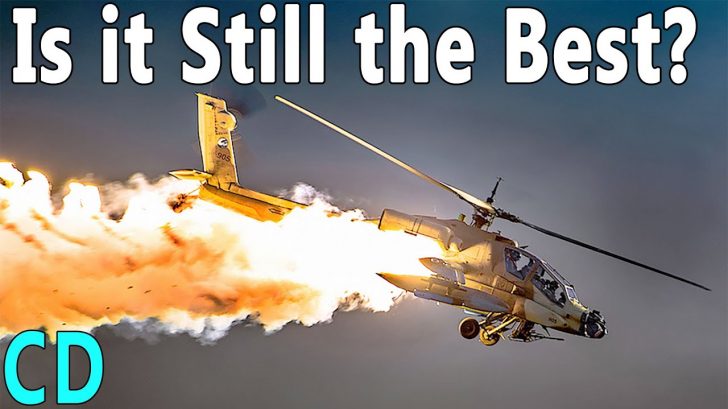The Apache has been THE preeminent attack helicopter for more than three decades. With so many years under its belt, one might ask if the Apache’s still got it.
Advanced Attack Helicopter Program
The US Army was determined to have its own advanced attack helicopter after the cancellation of the AH-56 Cheyenne. In August 1972, the Army announced the Advanced Attack Helicopter Program to replace their Bell AH-1 Cobras. The proposed design would have better range, firepower, and maneuverability, enabling it to fly very low to hide from enemy radar.
There were two primary contenders – the Bell YAH-63 and the Hughes YAH-64. After the trials in 1975, it was clear that the YAH-64 was the clear winner because its four-bladed propeller was more damage-tolerant and the taildragger tricycle landing gear was more stable than the single front wheel landing gear of the YAH-63.
Incredible Specifications
The body of the AH-64 was narrow, with the pilot sitting behind and above the gunner. This head-on profile presents a smaller target more difficult to hit than the broader helicopters like the Huey and Blackhawk.
For power, the Apache is fitted with twin GE T700 turboshaft engines with a rated output of 1,696 hp each, enabling the helicopter to reach a top speed of 183 mph.
Perhaps the most significant feature of the AH-64 was its helmet-mounted display (Integrated Helmet and Display Sighting System). The helmet was linked to high-power optics mounted in its nose and allowed them to control the 30 mm M230 Chain Gun.
Mission Capability
Its stub wings had four hardpoints to carry a mixture of 70mm Hydra missiles, Hellfire missiles, and fuel tanks to extend its range if needed. Moreover, the airframe is fortified with titanium and Kevlar to protect its crew and the essential systems present in the Apache. A bulletproof divider between the crewmembers ensured their safety in case one got hit and the bullet ricocheted. Meanwhile, the gearboxes on either side of the helicopter were designed to run without oil for up to 30 minutes.
Major Revisions
Since its inception, the Apache has had five major revisions starting from the AH-64 A, B, C, D, and E (the latest).
The main update of the AH-64E Guardian allows the new Apache to be part of the modern digital battlefield, tying the Apache into a network where data can be shared between planes, vehicles, and even troops on the ground. This upgrade includes a new version of the Longbow radar – the doughnut-shaped radar you see on top of the propeller. Instead of identifying 128 targets before, the new Longbow can now identify 256 targets at twice the distance, with a 360-degree surveillance mode to boot.
In addition, the V6 Guardian can now control drones and UAVs. With new color displays linked to the new Lockheed Martin Target Acquisition Designation Sight/Pilot Night Vision System, they can see farther than the weapons have range.
Compared To Others
Modern technology can do great wonders even when applied to a 40-year-old design. The new digital connectivity with the rest of the battlefield gives the Apaches a greater situational awareness than their adversaries. There are also far more Apaches than their Russian and Chinese equivalents, which only account for hundreds.
So far, the Apache looks like it can still carry on well into the 2030s or until the Future Vertical Lift Project produces its ultimate successor. Good luck replacing the Apache!



